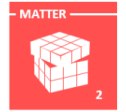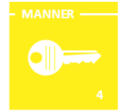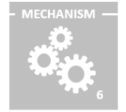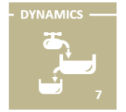The Capture Function
Definition
The Capture Function consists in capturing value from other actors through transactions: revenues from customers' budget on one side, and benefits linked to supplies on the other.
The value is captured through the Capture Super-Process (VC&C: Value Contracting & Capture).
An organization has two means of capturing value: cash (costs) and products. Therefore, to capture value, the Capture Function is mostly based on the following 3 modes:
- 1- Selling: capturing cash in exchange of the delivery of goods or services,
- 2- Buying: capturing value from purchased supplies, in exchange of cash,
- 3- Exchanging: capturing goods or services in exchange to other goods or services.

It is also possible to mix two approaches, and therefore follow advanced modes:
- Selling and Receiving (1+3): capturing value from customers in addition to cash, when selling products,
- Giving and Buying (2+3): delivering value to suppliers in addition to cash, when buying supplies.
The Capture Function needs therefore to find the right mix between Products to deliver and Costs, in order to get Revenues and Supplies. This is usually defined at the Business System level.
Although the different modes may seem to be linked to very different worlds (such as selling vs. buying), they share this same "capture" function, and can very well be closely managed. As an example, Walmart has "Category Managers", who are responsible for some product families, on the purchasing side as well as the selling side.
The Capture Function holds the keys of the transaction equation of the business. Subsequently, it also holds the keys of the cash flow equation of the business.

For practical purpose in the present web site, especially when no Exchanging mode is involved, the Capture Function may be split in two parts analyzed independently:
- on "Sources' side": the Buying mode part
- on "Targets' side": the Selling mode part
Examples
Here are a few examples illustrating the different modes of the Capture Function:
1- Selling:
- US Airways adopts yield pricing techniques to get the highest possible income from the tickets they sell
- Kitchen dealers are known for trying to capture the most from their customers
- NBC sells audience's attention availability to advertisers
2- Buying (or renting):
- A substantial part of the value capture for Walmart is done buying goods from suppliers
- Amazon proposes to buy the books it has sold you before
- Amazon proposes to pay website owners when their users click on Amazon links
3- Exchanging:
- Facebook gives a service to its users and receives personal data from them
- Coca-Cola spends fortunes in advertising to get or retain customers' attention
- NBC broadcasts programs and receives audience in return
(Although the Exchanging mode may seem unusual - and sometimes forbidden is some of its possible forms -, it is actually a very important way of capturing value for organizations, especially since the rise of the Internet, and even more since the Web 2.0).
1+3- Sell and Receive:
- Gillette sells razors, gets revenues in return and customer's propensity to buy blades
2+3- Give and Buy:
- Cash for Gold Co. buys gold for a cheap price, giving people an easy way to sell old jewelry
Capture Function Strategy
The Capture Function focuses on the VC&C Super-Process (Value Contracting & Capture). That may mean focusing on the VC&C Super-Process in terms of:
- Quantity of outputs: amount of revenues or amount of supplies
- Quality of outputs: quality of supplies
... for a given cost and amount of delivered value.
Market Function < PREVIOUS - NEXT > Industry Function









